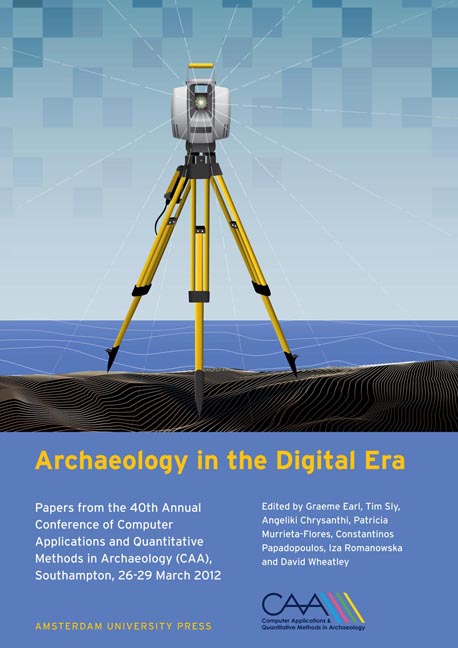 Archaeology in the Digital Era
Archaeology in the Digital Era Published online by Cambridge University Press: 16 February 2021
Abstract:
When investigating the evolution of historic architecture, and putting together various pieces of information (each with its specific characteristics in terms of precision, scope and reliability), time points and intervals the analyst will identify are often inconsistent in terms of granularity. Our contribution introduces graphic solutions that combine multiple aspects of the parameter time, and particularly multiple granularities. As a first step, we initially propose a visual comparison of25 alternative calendars, covering a wide range of historic periods and cultures or civilisations.This first result is then extended to propose a more generic framework for visualising time with multiple granularities. It is applied on two very different test cases. The contribution will present the concepts and ideas behind this research, as well as their practical applications on the tests cases and accordingly their possible benefits for researchers and practitioners in historic sciences.
Keywords:
Time-oriented Data, Information Visualisation, Historical Calendars
Introduction
Investigating the evolution of historic artefacts most often starts with the cumbersome task of putting together various pieces of information, each with its specific characteristics in terms of precision, scope and reliability. Naturally, time slots are among the main clues analysts expect to spot when filtering and cross-examining these pieces of information.
In order to proceed to any type of reasoning (teleological or causal) one has to place all the data and pieces of information. But due to the very nature of historic data sets - heterogeneity, uncertainty, missing data, uneven distribution in time (etc.) - time points and intervals the analyst will identify are often inconsistent in terms of granularity. Time intervals, typically the overall lifetime of an artefact, its periods of construction or modification, may be described by expressions like “between the last quarter of the XHIth c. and the middle of the XIVth c.”, whereas some punctual events may be recorded more precisely, in cases like “the fire that occurred on the night of November 29th 1554’ or “the town's siege between March 1445 and November 1445”.
In parallel, describing an artefact's life evolution often implies taking into consideration pieces of information that correspond to regular or cyclic events, with here also inconsistent granularities.
To save this book to your Kindle, first ensure [email protected] is added to your Approved Personal Document E-mail List under your Personal Document Settings on the Manage Your Content and Devices page of your Amazon account. Then enter the ‘name’ part of your Kindle email address below. Find out more about saving to your Kindle.
Note you can select to save to either the @free.kindle.com or @kindle.com variations. ‘@free.kindle.com’ emails are free but can only be saved to your device when it is connected to wi-fi. ‘@kindle.com’ emails can be delivered even when you are not connected to wi-fi, but note that service fees apply.
Find out more about the Kindle Personal Document Service.
To save content items to your account, please confirm that you agree to abide by our usage policies. If this is the first time you use this feature, you will be asked to authorise Cambridge Core to connect with your account. Find out more about saving content to Dropbox.
To save content items to your account, please confirm that you agree to abide by our usage policies. If this is the first time you use this feature, you will be asked to authorise Cambridge Core to connect with your account. Find out more about saving content to Google Drive.